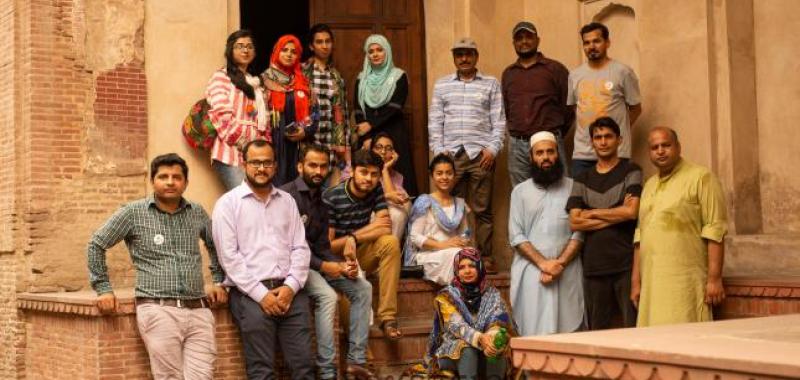
The student chapter of the Society of Photo-Optical Instrumentation Engineers (SPIE) at LUMS, arranged an educational trip on July 4, 2019 to the National Museum of Science and Technology, Lahore, Masjid Wazir Khan and the Shahi Hammam. SPIE, the international society for optics and photonics, partners with researchers, educators, and industry to advance light-based research and technologies for the betterment of the human condition and is based in Washington, USA.
The society arranges outreach activities and educational and industrial trips. These trips enhance communication and cognitive skills and build confidence in exploring new things. The trip by the LUMS SPIE student chapter, led by Dr. Muhammad Faryad, Assistant Professor at Syed Babar Ali School of Science and Engineering, provided a refreshing experience to the students and gave them a break from their hectic daily lives. The trip also enhanced the students’ knowledge of science and culture in a short amount of time so that students can think creatively and productively about these subjects.
The Science Museum had exhibits on the different fields of Physics, e.g., Optics, Mechanics, Thermodynamics and Electromagnetism. The experiments related to Optics in particular were terrific with excellent demonstrations of light's properties. Additionally, the Optics exhibit provided great insight with regards to the SPIE team’s project on designing new experiments of Optics which are to be used in outreach activities. Different physical models of Biology, Health Sciences, and Mining were on display as well, giving the students a greater appreciation of these fields.
Following the trip to the Science Museum the SPIE team also visited Masjid Wazir Khan and the Shahi Hammam (Royal Baths). Masjid Wazir Khan is a masterpiece of architecture, decorated with elaborate tiles and calligraphy that includes verses of the Quran and sayings of the Prophet Muhammad (P.B.U.H.). The Shahi Hammam is illuminated by sunlight, which filters through several openings in the ceiling, that also aided ventilation. Most of the Hammam's interior and several Mughal era frescoes have been preserved.
This visit to historical places, gave students the opportunity to learn how people lived in the past and what local culture looked like at the time. The students gave very positive feedback at the end of the visit and requested similar excursions in the future.





